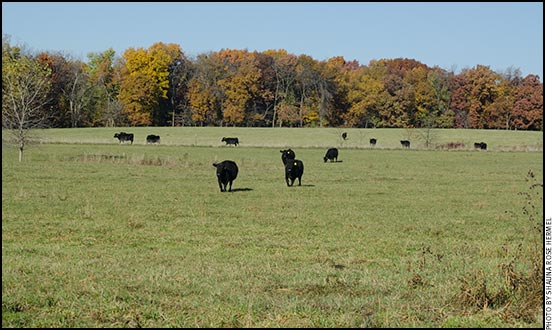
Cow Culling Considerations
Look at marketing options, seasonal prices and feed reserves.
Every book on best management practices related to beef cattle production calls for pregnancy checking the herd to identify open cows as early in the season as possible, says South Dakota State University (SDSU) Extension Livestock Business Management Field Specialist Heather Gessner.
“Open cows in the herd have a negative impact on profit as they are consuming expensive inputs such as feed, AUMs (animal unit month), and labor without contributing back to the operation. The reasons cows do not breed back are many and varied and something cattle producers need to be monitoring,” Gessner says.
Many times cows are not identified as open until late fall/early winter, as this is when cows are typically brought in off summer grazing areas and calves are weaned, explains Gessner.
“A downside with this plan is that most other cattle producers are working on the same timetable, and thus many open cows hit the market at the same time, resulting in a seasonal price decline during the fall,” she says.
Is there a better option?
The national average cutter cow price ranged from $77-$78 per hundredweight (cwt.) for the first three quarters of 2013, with projections for the fourth quarter at $78-$80 per cwt. and for the first quarter of 2014 at $79-$83 per cwt., according to the Livestock, Dairy and Poultry Outlook-November 2013.
“This increase in price projections may be an indicator for producers to hold on to open cows until after the first of the new year,” Gessner says. Some reasons to consider this option include:
- The potential to add weight to an animal that may have come off grass in poor body condition. Adding pounds will increase the total weight available for sale and will also increase the white fat on the carcass.
- Current signs are pointing toward a decline in cow slaughter numbers and the number of heifers destined for feedlots. With fewer cows and heifers entering the supply chain, beef production will be reduced. Supplies of lean ground beef used in many processing plants will face the biggest shortage as cow slaughter numbers decline. This shortage of supply will pressure prices to remain at or above current levels.
- Young cows that are open are candidates to be re-exposed for fall calves. Bred-female prices have increased in the last few months. Marketing a group of young cows bred for fall calves may well be a profitable venture.
- “Both adding weight and increased value are ways to bring additional profit to the operation. However, added weight and days on feed are not free. If you have a relatively inexpensive feed resource available, such as cornstalk grazing, low-test-weight corn or low-cost forages, there may be opportunity for increased profits,” she says.
Additional considerations:
Current feed supply inventory must be taken into consideration.
“Feedstuff needs for the remaining cow herd should be analyzed carefully to ensure the main herd can be appropriately fed throughout the winter and spring. If feed inventories are not large enough to get through extreme cold snaps or an extended spring feeding period from a delayed spring turnout, selling open cows may be a better option, unless the added return from retaining the cows is sufficient to make up for any feed shortage,” Gessner says.
Producers who are optimistic about heifer retention and herd expansion/rebuilding will want to watch the cow market closely to analyze the size of beef-production changes during the fourth quarter of 2013.
“Timing cull-cow marketing decisions based on the seasonal cull-cow prices and the potential for cull-cow price increases after analyzing feed rations and costs could add profits this year,” she says.
For more information contact Gessner at the SDSU Extension Regional Center in Sioux Falls, 605-782-3290 or any SDSU Extension livestock business management field specialist or SDSU Extension economics specialist; or contact Warren Rusche, SDSU Extension cow-calf field specialist at the SDSU Extension Regional Center in Watertown at 605-882-5140 or any SDSU Extension cow-calf field specialist or SDSU Extension beef specialist.
Editor’s Note: This article is from SDSU Extension.






